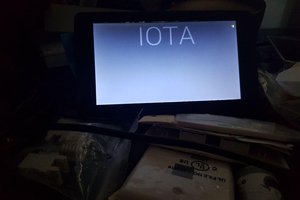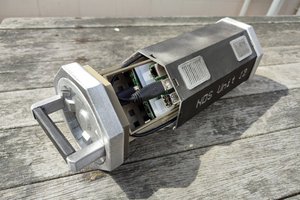[UPDATE 2015/08/29 - I've been testing out the oDroid XU3 and the Radxa Rock Pro with good results. While I really like the performance of both SBCs, this may end up being a RASPI project. oDroid keeps obsoleting their boards for newer models with different features and Radxa, though I love the hardware, doesn't appear to be maintaining their Linux kernel. (The stock kernel from Kernel.org works, but without HDMI.) So I'm pondering using the Raspberry Pi 2 and giving up a bit of CPU in exchange for a more stable platform.
After all, if users can't buy the same SBC and follow along, then this project is of little use. ;-) ]
This project consists of several components. First is the backpack which has power and a 4 to 8 core SoC with Bluetooth and Wifi. The general idea is that sometimes you might need a web server on your back. Optional add-on modules/set-ups for the hackpack will include-
- SDR - HAM Disaster Response or RF Signal Tracking
- NFC - Mobile ticket taking/tracking for outdoor venues/festivals.
- ISP - To set up mobile wifi hotspots and providing services in remote or disaster area or provide LAN/WAN services to an entire team in the field
- Journalist - or uploading photos to a news site as they are taken or providing live field web streams
- Weather - Everybody cares about it, hardware to make a weather station anywhere
- UAV - Ground Station Telemetry Hardware for flyers
- Field Networking - Connect multiple hackpacks together using RF (802.11s or equivalent Ad Hoc mesh network)
The second part is the tool-kit for the rest of the hackpack. This consists of the items required to conduct hardware and software hacking in the field. Everything from hand-tools to FTDI adapters to solder will be addressed in this BOM. What I'm really going for here is a First Aid Kit for hemorrhaging electronics that NEED to be repaired in the field. Suggestions for needed items are welcome. Though please state your use-case for the tool so we avoid too much overlap.
The last part is a Bill of Materials for components that commonly fail and would be useful to have in field repairs. (One example could be - 'a selection of capacitors to replace DC blocking caps which have failed'.)
One thing that's important to understand is that I meant to leave most of the backpack itself free. My preliminary design goal is that under 800 cubic inches of space be needed for hackpack items. (As a point of reference the backpack I've selected, the High Sierra Swerve, has 2230 cubic inches of total space.) There should be enough empty space that it can serve as a standard day-pack for the user.
 Alpha Charlie
Alpha Charlie


 TheBestJohn
TheBestJohn
 tlankford01
tlankford01
 Giovanni
Giovanni
 sdfgeoff
sdfgeoff
I have pn532 (rfid) cc2540 (bluetooth sniffer) CC2531 (zigbee sniffer), wn722n (wifi) u-blox7(gps\glonass) rtl2832u(rtl-sdr) mr3040 (autonomous wifi router. previously used wr703n) e3276 (modem).
Zigbee, bluetooth, ublox I have not used but I plan to set up in the future. And need active usb hub, powerbank have output 2.1a and 1.1a.
On the run I use nexus 7 as the screen, in mercury ssh stored ready-made teams like to run the rtl-tcp server to which I connect through sdr touch.
Sometimes i use rpitx, lol https://github.com/F5OEO/rpitx. Sometimes osmocom ;-).
Really need... sensor gui. It lacks good management with tablet.
A couple of photos taken a few months ago
Sorry for google translate ;-)